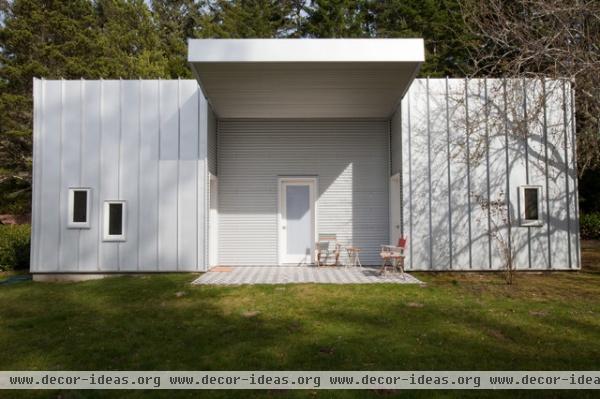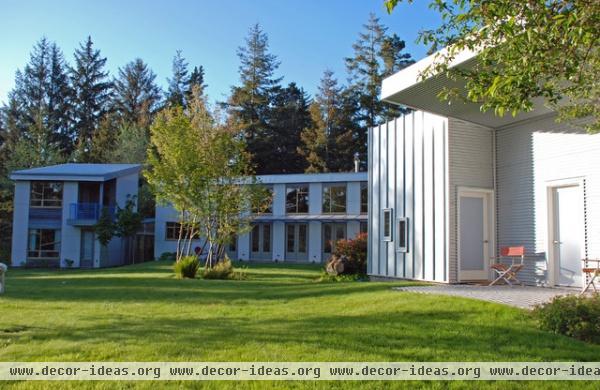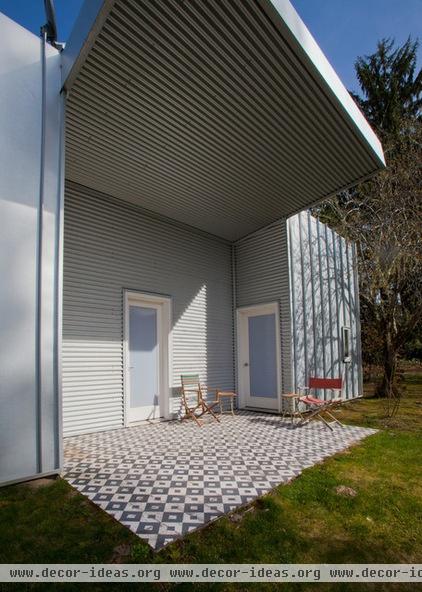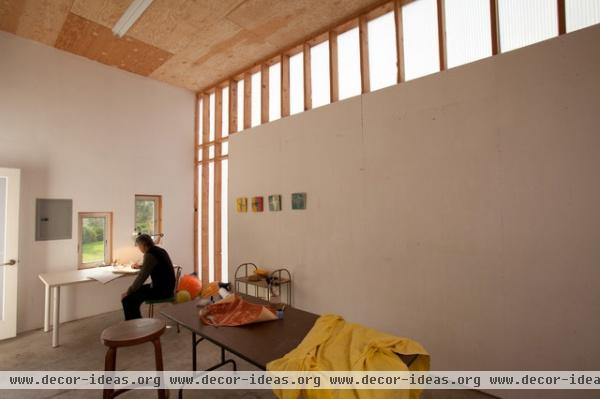2 Washington Studios Give Artists a Place to Create
Artists need time to think, daydream and allow new ideas to develop — Henry Thoreau's best work was done in isolation at Walden Pond, and Vincent van Gogh painted many of his masterpieces while gazing at the lavender fields of Provence. But finding that time can be difficult.
Cyndy Hayward bought a 14-acre plot of land in Oysterville, Washington, with the intention of turning it into an artists-in-residence colony to help artists find their creative spark. Knowing it will take time and money to complete her vision, she has started slowly, first building a small structure containing two studios next to her house. Architect Geoffrey Prentiss worked closely with her, building a dramatic, durable and high-functioning place as the beginning of her dream.
Studio at a Glance
Who works here: Artists in the Willapa Bay AiR program
Location: Oysterville, Washington
Size: 280 square feet
Cost: $75,000
Photographer: Michael Datoli

The 280-square-foot structure consists of two independent studio spaces with a carport, bike storage and a small bathroom in between. The artists stay in Hayward's main house at night and work in the studio during the day.
Hayward chose lasting materials that would fit into her budget and still look great. "Because the building was to house spaces that would be splattered with paint and materials, I knew I wanted it to be simple and relatively inexpensive," she says. "But style and design were key. I like to think all structures are works of art."

The two studios are very close to the main house, making it easy for the artists to go back and forth during their monthlong residencies. The main house's corrugated metal roof matches the roof and running-seam siding on the studio.

When ceramics artist Sandy Bradley finished her residency, Hayward asked her to design these custom hand-painted concrete tiles for the studio's sunny patio.

Garage doors on both sides of the studio can be opened up completely for light and fresh air. The wide opening also allows artists to bring large items in and out.

Prentiss installed polycarbonate sheet siding (Polygal) over the studio's exposed framing. The translucent walls were an affordable solution to the need for great natural light. Windows would've added to the budget substantially; Hayward also knew they'd take up a lot of wall space that would be better used for working on and displaying art, and that the view could actually be a distraction.
Each studio has its own door that leads out to the patio, so artists can take breaks and gaze across the meadow.
The Polygal wall panels also helped to cut down on the cost of drywall and insulation. The studio isn't a full-time residence, so this compromise in materials worked. However, it does get cold in the winter, so Hayward outfitted each studio with electric heaters, as well as exhaust fans, power outlets, sinks with paint traps and art-grade fluorescent lighting.
More: Tips for getting the creative space you crave












